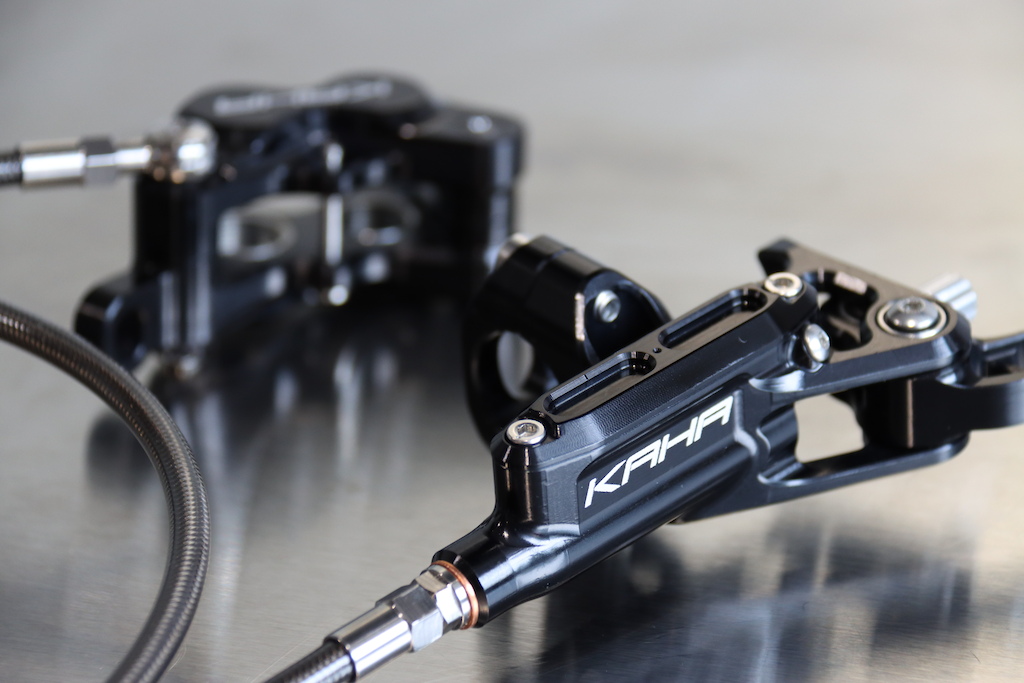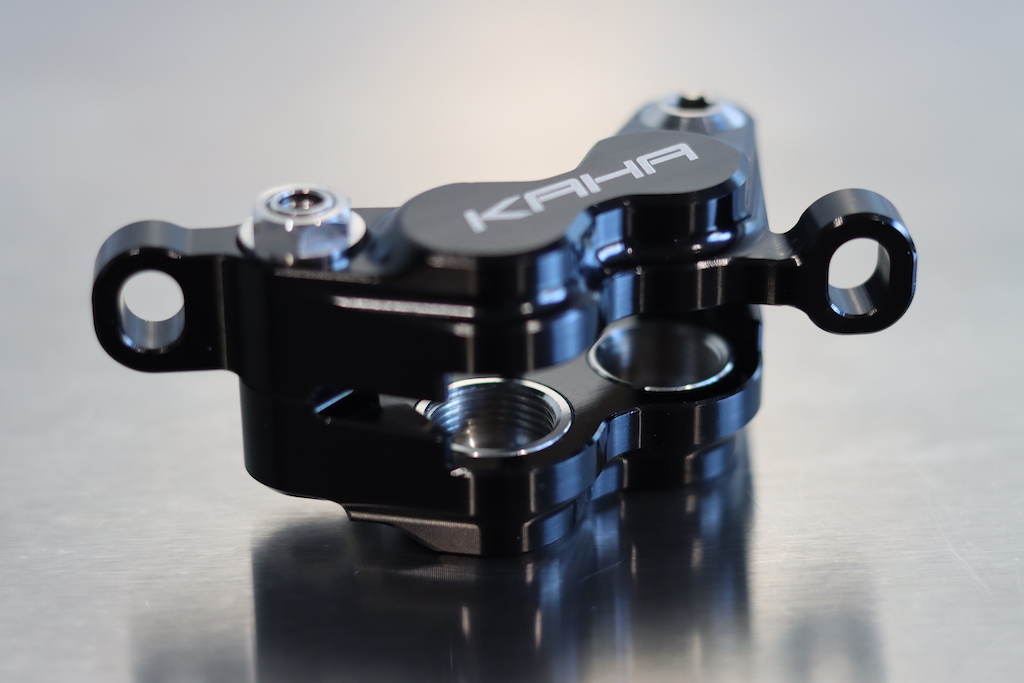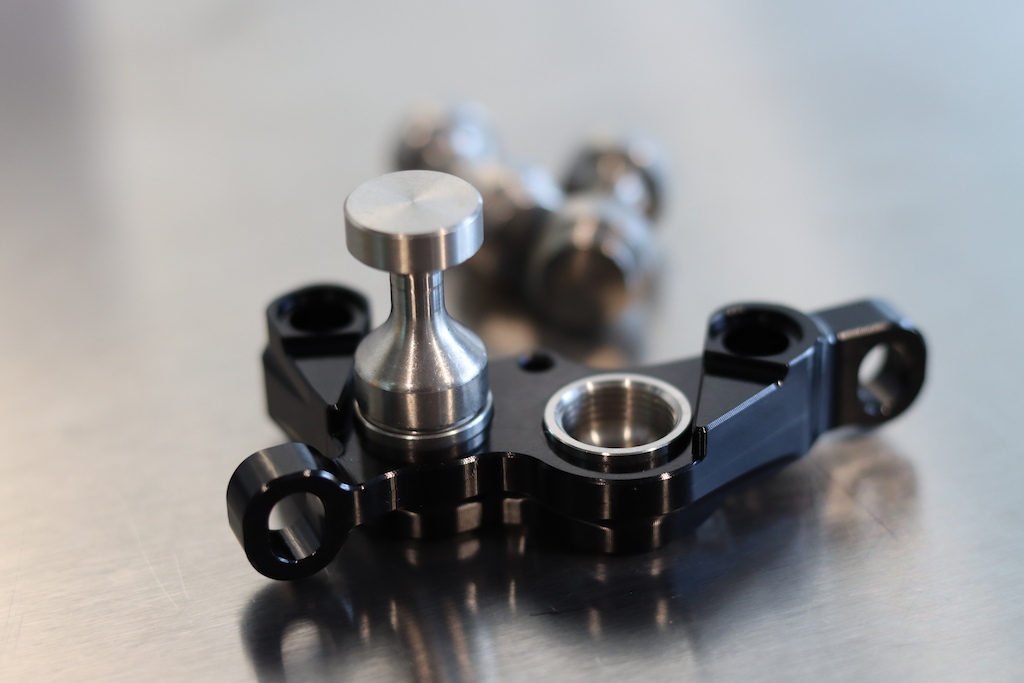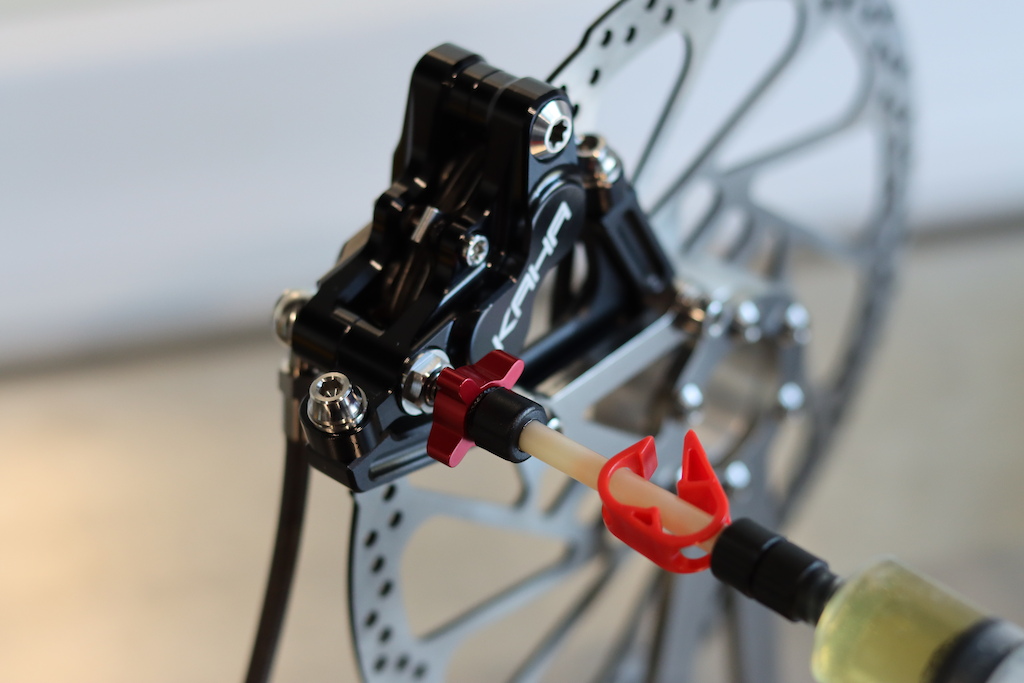Radic Performance Announces New Boutique Brakeset from New Zealand
In the world of mountain bike brakes, the larger players like Shimano and SRAM have been fairly quiet for a few years now, but on a smaller scale, boutique brands have begun to emerge. Radic Performance is one of those which was created by Taylor Grey, an engineer based in Auckland, New Zealand. His interest in building a stronger mountain bike brake, such as the Kaha model, stems from a background in designing dual clutches and gearboxes for supercars.
The Kaha uses a fully machined four-piston caliper and master cylinder from 7075-T6 aluminum that has been optimized using Finite Element Analysis (FEA). That led to a system that is said to be light and stiff enough for the rigors of downhill, enduro, and e-bikes.
Starting at the lever, which pivots on stainless steel cartridge bearings, a 9mm master cylinder piston produces a smooth actuation through an easy-to-pull mechanic ratio over the course of a short dead stroke (the distance the lever travels to engage the pads). Titanium hardware secures the brake set to the bike and steel braided Goodridge lines are called upon for their durability.
At the caliper, there are two sets of stainless steel 16 and 17mm pistons which glide through PTFE dynamic seals. Taylor has chosen to use stainless steel for the piston material due to its low thermal conductivity, keeping the heat generated in the brake pads at bay from the fluid in the caliper. Even the oil flow through the caliper has been designed to pass all of the chambers sequentially, avoiding pockets where air may get trapped. That also allows for a full flush of the system when a bleed is performed. To achieve the best possible bleed, it’s actually advised that pads are left in the caliper to achieve that short dead stroke.
One of the most interesting bullet points on the Kaha brake is that it can be configured to use either DOT 5.1 fluid or mineral oil, plus the calipers utilize the commonly found Hope V4 pads.
In total, the system weighs 320g per side, including an 80cm braided line and pads. Each set of Radic Kaha brakes is machined and hand assembled in New Zealand for the tune of $1200 NZD. Australasia orders will commence first through the Radic Performance website as of 6pm NZDT on November 9 with delivery expected by the end of 2022, with international shipments to follow in 2023.
Author Info:
Must Read This Week





This screams for an article on how to make your 15k bike a 20k bike in 10 easy steps:
1. Send for custom paint job
2. Hand made tires
3. Replace your oem wheels with Custom anodized Chris King wheels with berd spokes
4. Upgrade brakes to radics
5. Buff drivetrain with garbruk chainring cassette and jockey
6. Upgrade axs shifters with custom buttons
7. Custom stem and handlebar, VR model generated fit with kinesiologist and AI assisted design.
8. Replace all fasteners with titanium versions
9. Custom saddle made with organic hormone free alpaca leather
10. Custom grips made from environmentally friendly synthetic rubber made from the tears of the bike industry CEOs
11. Upgrade your Eewings for a set of Sturdy cranks.
And, tbf, Garbaruk is not too expensive. Their 12 sp cassette is less expensive than a SRAM one.
For chainring and jockey wheels, I'd go for Titanium from Dward Designs.
Brakes have to be Trickstuff Maxima or nothing.
Sidenote, customize the rest of the XX1 AXS derailleur with Hop Carbon components. There you have it, a ≈$2300 derailleur.
Cheers!!
No signs of wear in the teeth.
With regards to the anodizing resistance, I got the silver version so I cannot really say if it's good or bad.
Uses Hope V4 pads: dumb
Guy who made these brakes clearly knows his stuff and there is a reason they are using a hope pattern.
"In income tax terms, New Zealand is taxed relatively lightly, according to OECD data.
If you combined all the tax a worker paid and any social security contributions they made, then subtracted government assistance like Working for Families, a single worker in New Zealand on an average income had a “tax wedge” of 19.4% in 2021. That was second-to-lowest in the OECD, ahead of only Colombia and Chile.
If it were a person who had a partner and children, they would have a tax wedge of just 6.5% on an average income. That was still second-lowest."
Source: www.stuff.co.nz/business/money/130094079/how-does-new-zealands-tax-bill-compare-to-other-countries#:~:text=If%20you%20combined%20all%20the,of%20only%20Colombia%20and%20Chile.
Sure, bikes and housing is expensive here but "socialist dystopian shithole" isn't my experience as a migrant to NZ and from a tax point of view, I pay significantly less tax than I did in Australia. But don't go letting the facts get in the way of your story.
In case you're interested in tax competitiveness here's the link:
taxfoundation.org/2022-international-tax-competitiveness-index/?utm_term=international%20tax%20rates&utm_campaign=2022+ITCI+-+Search&utm_source=adwords&utm_medium=ppc&hsa_acc=4787933123&hsa_cam=18707960874&hsa_grp=144249398113&hsa_ad=630713078544&hsa_src=g&hsa_tgt=kwd-321497231714&hsa_kw=international%20tax%20rates&hsa_mt=b&hsa_net=adwords&hsa_ver=3&gclid=CjwKCAjwtp2bBhAGEiwAOZZTuE9mkIn_Ya1Z8jUlqpfMkU3dzR1yAx690H66ctrmKxRxZj5-KgRx4xoCZjMQAvD_BwE
also, forgiving taxation by what the state does for you with said money, is also not an argument for why taxation is good. ffs.
you are brainwashed to the absolute hilt.
just.....*slow clap*
Try being from eastern EU country where your money cut 20 fold and salaries top out around 400 USD a month
Enduro-mtb tests are well known for being nonsense. This is yet another example of that. I don't need to explain what the exact flaws in the test were. I didn't watch them do the test, so I can't tell you how they screwed up, but I can absolutely state that they clearly did. If they did a test proving that a 1997 1.3l nissan micra can beat a bugatti veyron to 200mph, I wouldn't need to explain how the test was wrong. It just obviously is.
Brakes are not magic. They are a very simple mechanical system that multiplies the force applied by your finger, by whatever the mechanical advantage built into the system is. Don't be fooled by all the smoke and mirrors....
Oh, and regarding the pads... I haven't compared Guide pads to Hope pads (and never seen a Hope pad in person), but how can the one be "better" than the other? Do they have a different total thickness?
Stainless steel much different conductivity than steel
If they are powerful enough to stop him, they are powerful enough to stop anyone...
And I agree that many if not most brakes on the market have one flaw or another, bite point, reliability, ridiculus pricing, lack of power, etc. So it's a matter of picking your poison really. For years I accepted the retarded bite point issue of Shimano to have a lot of power without having to pull much, currently I have high consistency but harder pull with a TRP, something like a "classic" Hope from what I can remember of Hope brakes before the new lever.
This is the problem with "factual data", it can be just as erroneous as guesswork. Go on any flat-earther forum and you will find endless reams of so called "factual data". Highly accurate measurements of various variables, often measured on extremely high quality equipment. All showing that the earth "must be" flat, due to some extremely flawed methods, essentially measuring the wrong thing, or not accounting for some significant variable. In short, you can prove anything with bad data...
But yes, the gist of it is that enduro-mtb test was deeply and clearly inaccurate.
Caliper alignment is a big one often overlooked in mtb. If your rotor gets pushed off to one side when the pads engage, this has a huge effect on braking power. I often get people ask me why my brakes are so much more powerful than their, apparently identical, brakes. 9/10 times their caliper is just very crooked, and 2 minutes with an allen key getting it all correctly aligned gives them an instant and obvious boost in braking power
From a very anecdotal perspective I find that their torque values are fairly consistent with my experience with the brakes of this list I got to try (Mt5/7, Saint, Sram stuff, TRP Slate).
I would be very curious to see the results with a control rotor and pad material, I would expect to see decel values much more consistent and coherent with torque values.
Anyway interesting discussion thanks !
In answer to your point about the lab techs: As a calibration, you can assume by default I think most people completely incompetent at their jobs.
Just in case you are reading this thread sometime in future and think I'm being a dick
It’s like a tyre test with no comparisons to a DHF/DHR.
These new Radics looks sweet and promising!
trickstuff.de/customerinformation-erp-2
I have had pad contact adjustment since the Avid Juicy 7s (2005?) and instantly was sold on that feature.
Enve, make nice things but a lot of people say they're over priced. A rim that costs over £1000 compared to a Reserve rim costing £600, more people want Reserves.. Trickstuff make nice things, but nowadays, you can get all the performance of them with a brake that is a third of the price. Magura MT7 have all the power, HopeTech4 have all the feel and a lot of the power, Hayes Dominion have been getting so much higher reviews over Trickstuff..